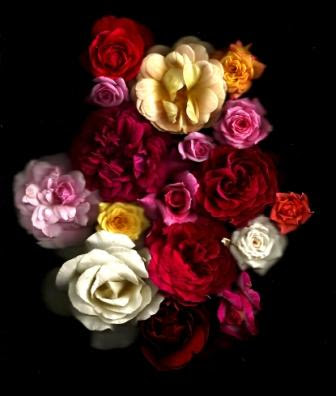 I thought I'd heard the pinnacle of supreme bureaucratic overreach when I learned about the EPA considering the banning of our annual spring burn (see my blog titled Burn the Prairie!) but it seems the EPA was just getting warmed up.
I thought I'd heard the pinnacle of supreme bureaucratic overreach when I learned about the EPA considering the banning of our annual spring burn (see my blog titled Burn the Prairie!) but it seems the EPA was just getting warmed up.Recent frantic headlines and editorials across the Midwest, all something on the variation of "EPA to Crack Down on Farm Dust," have alerted anyone with the slightest interest in current events that the EPA is reevaluating the dangers present in the air we breathe; particularly regarding PM (particulate matter). Twenty-one farm state US Senators signed a letter on July 23rd opposing changes in PM standards. The local news picked it up about 5 nights ago and the local Manhattan, Kansas newspaper even ran an editorial on the subject late this week.
All the hubbub is about the Policy Assessment for the Review of the Particulate Matter National Ambient Air Quality Standards (released to the public via the Federal Register on July 8, 2010). Now, I'll tell you, even with my generally good scientific background, the 357 pages of this report are tough to read. And it's difficult to take away anything that suggests that this is a farm issue. The word "farm" only occurs in the report when discussing past litigation of standards and listing the American Farm Bureau Association as being one of the parties to the litigation. And "agriculture" is only mentioned referring to a previous study that found that western airborne "contaminants were shown to accumulate geographically based on proximity to individual sources or source areas, primarily agriculture and industry." In fact, all I can essentially glean from the report is that it is a comprehensive review of the evidence that particulate matter has detrimental effects on the cardiovascular, respiratory and visual systems, among other important body stuff. All the hype about farmers having to wet down their fields before harvest and all dirt roads needing to be paved is coming from somewhere else, not from the report. The big news that I can understand comes in Appendix 2, Table 2A-1 where it's revealed that under current PM standards, 12% of US counties (and 24% of the population) fail the standards, while the alternative standards being considered would result in anywhere from 29% to 79% of the counties (accounting for the living area of most of the US population) failing the new standards.
So, I don't get it, myself, but out there in the public view there's a fairly dry report on particulate matter standards by what I'm sure are a bunch of highly knowledgeable, well-meaning scientists working for the EPA, and somewhere, some other intelligent scientists, who can draw conclusions from that report far better than me, are raising alarm sufficient to rile 21 US Senators that the EPA is trying to destroy America.



+comp.jpg)

+comp.jpg)